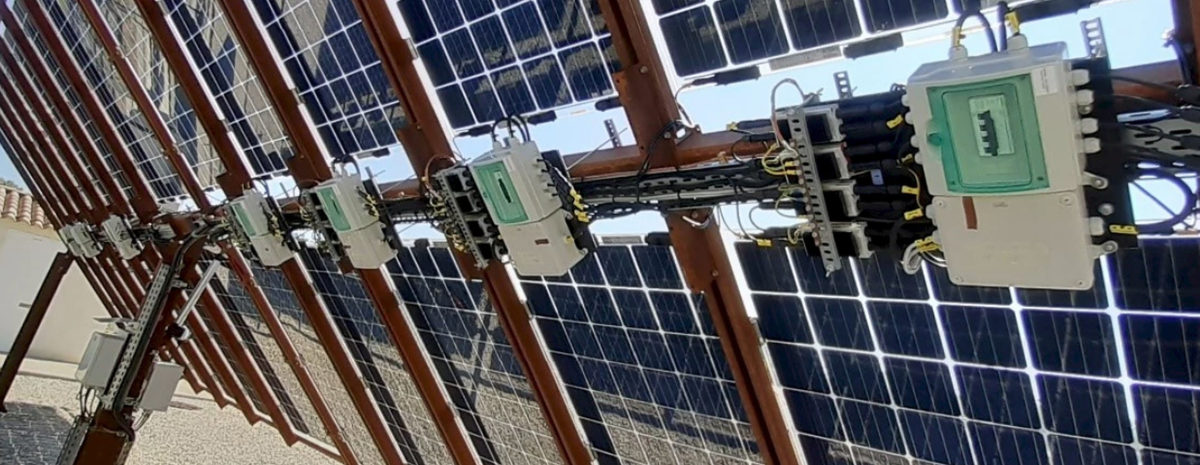From pv magazine France
France's National Solar Energy Institute (INES) – a division of the French Alternative Energies and Atomic Energy Commission (CEA) – has teamed up with Italian solar module manufacturer Enel Green Power to jointly develop DC/DC maximum power point trackers (MPPT). The two partners are also now working on high-efficiency bifacial PV panels.
“However, this technology, intended among other things for applications in large ground-based power plants, can still improve energy efficiency and not only thanks to cell and module yields,” INES said in a press release. “The addition of an energy conversion system, as close as possible to the panel, makes it possible to reduce the impact of certain faults linked to the installation site, and to increase the overall power of the plant.”
Enel Green Power and INES have developed a DC/DC MPPT solution with a maximum power of 500 W at the module level. This makes it possible to increase the number of panels in a row in order to increase the overall power, while limiting the output voltage to remain in the low voltage range of less than 1,500 V DC.
They said 36 prototype DC/DC MPPT converters were installed at a CEA demonstrator site in Cadarache, France, to conduct tests in real operating conditions. The demonstration unit is equipped with a specific monitoring tool that transmits voltage and current data at the input and output of the converter, as well as overall production data.
The demonstrator has been in operation since July 2021. It has made it possible to observe the proper functioning of the converters. The companies compared the energy produced by the solar plant equipped with the solution to the energy produced by a conventional power plant equipped with a conventional inverter. The results showed that the solution could contribute to energy production gains of 1%.
The deployment of the solution on a very large power plant on a 1 MW scale is planned in Catania, Italy. It will make it possible to test a pre-industrial version and refine the technical and economic gains made.
This content is protected by copyright and may not be reused. If you want to cooperate with us and would like to reuse some of our content, please contact: editors@pv-magazine.com.




1 comment
By submitting this form you agree to pv magazine using your data for the purposes of publishing your comment.
Your personal data will only be disclosed or otherwise transmitted to third parties for the purposes of spam filtering or if this is necessary for technical maintenance of the website. Any other transfer to third parties will not take place unless this is justified on the basis of applicable data protection regulations or if pv magazine is legally obliged to do so.
You may revoke this consent at any time with effect for the future, in which case your personal data will be deleted immediately. Otherwise, your data will be deleted if pv magazine has processed your request or the purpose of data storage is fulfilled.
Further information on data privacy can be found in our Data Protection Policy.